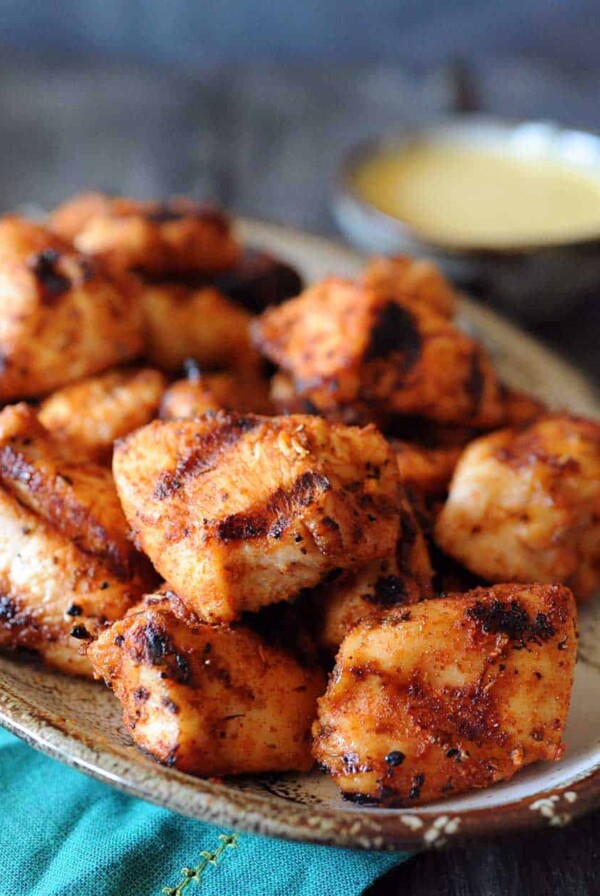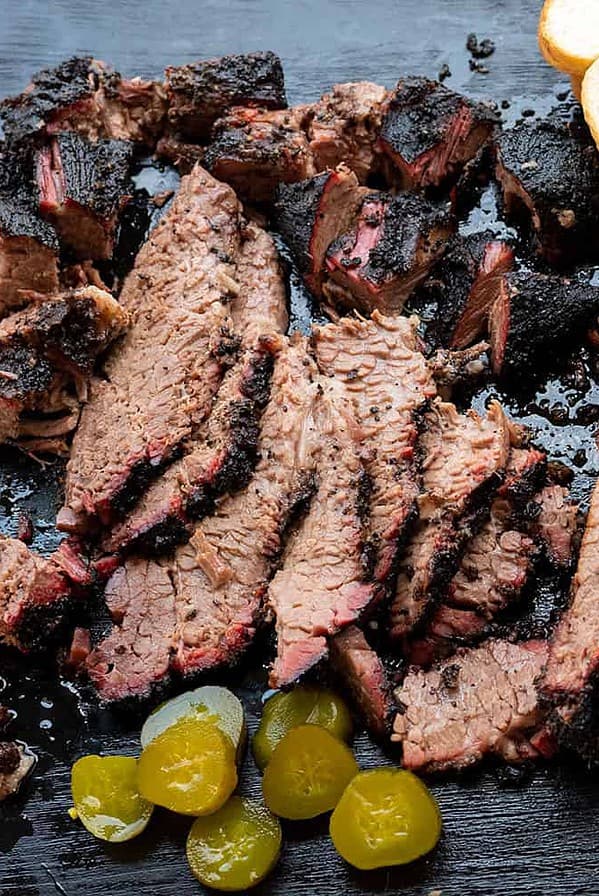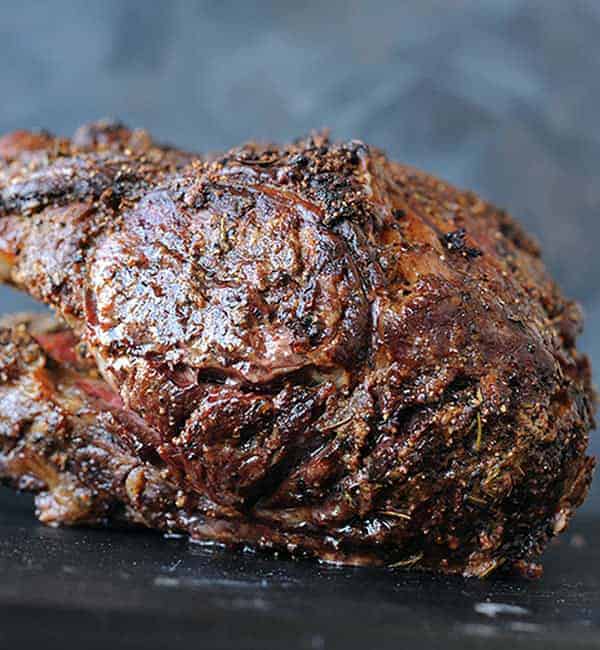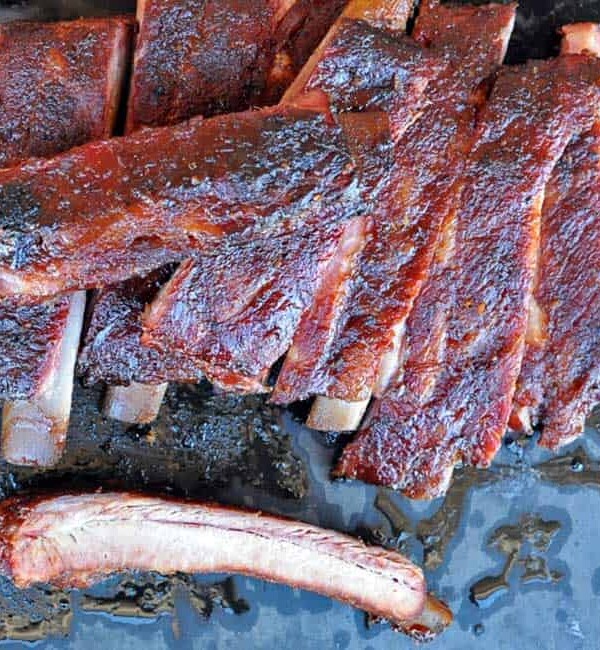This week’s BBQ Tips Podcast covers five methods for cooking filet mignon, including grilling, searing, the reverse sear, sous vide and one unique method restaurant chefs use.
This past week was pretty fun. I spent some time filming with Cowboy Charcoal. We created some how-to videos. I’ve been cooking with Cowboy for years now.
I use a combination of their all-natural hardwood briquetes and their a lump charcoal when I do my competition cooks. I just layer them both inside of my Hunsaker Drum, and then I usually add some wood chunks in there, as well.
I switch up the flavors depending on which protein I’m cooking, but I’m always cooking with Cowboy.
Listen to the BBQ Tips Podcast on
Table of Contents
This weekend is the big Super Bowl happening here in Las Vegas, the teams are actually staying just a couple miles from my house, which is crazy. So far, traffic hasn’t been too wild, but all the neighbors are all pretty excited about it.
Hopefully you guys tuned into last week’s episode because that’s when I really touched on Super Bowl food, specifically wings and how to cook them on any type of grill, how to smoke them, how to grill them, etc.
But this week, I figured I’d take a little twist. So if we’re going to be spending all weekend focused on Super Bowl, we can’t forget the other big day that’s coming up.
And that is Valentine’s Day. So you’re probably going to have a big party with your friends, watching the game. Well, you better take some time then, a couple of days later, Feb. 14, to give a little extra special love attention to your loved one.
You have some options. Of course. You can go out to dinner. And, you know, I support local restaurants and small businesses, so if that’s your jam and you want to do that, that’s awesome.
But I also think another special touch is if you were to prepare a nice meal at home. So today’s episode is all about filet mignon.
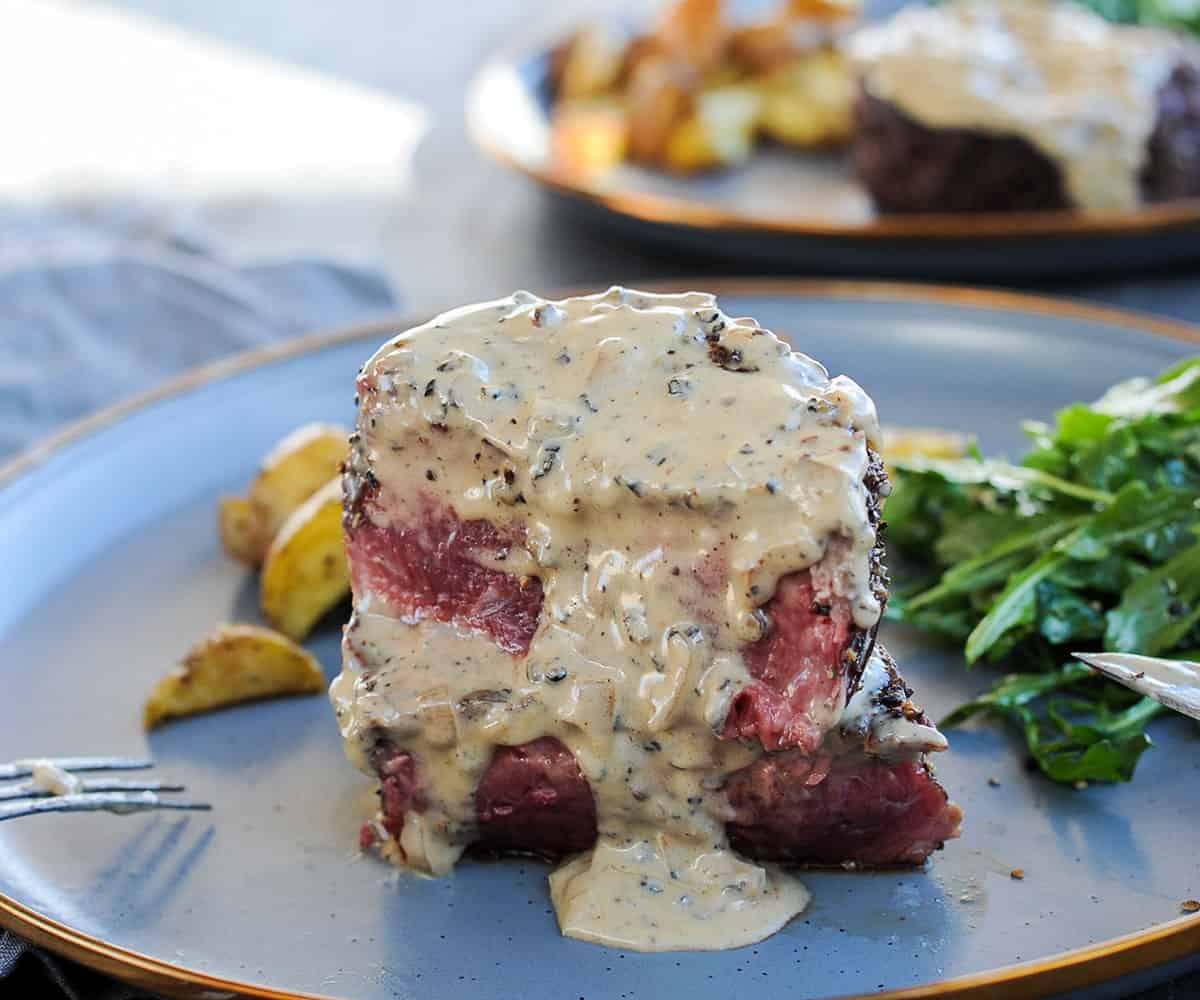
Save this BBQ Tip
Enter your email, and I’ll send this link directly to your inbox. Plus, you’ll get new BBQ recipes and tips weekly.
What is filet mignon?
Filet mignon is considered one of those boujee cuts because it’s a little bit more expensive, usually per pound, than a ribeye, strip or a sirloin steak.
That’s because it’s so beautifully tender. It’s a lean cut, but it’s still packed with flavor and every bite is just like succulent and melt in your mouth. So that’s why it’s such an ideal cut.
And it’s also nice and petite. So it goes great with a lobster tail or some grilled asparagus or some other sides.
As we talk about filet mignon, I’m going to talk about a few different ways that you can cook them.
You can grill them, sear them, reverse sear them, sous vide them or reverse sous vide them, which is a name that I kind of made up. But I’m going to explain that process to you a little bit later. First, let’s talk about seasoning.

How to season filet mignon
Usually the steaks are about two inches tall and maybe 4-6, sometimes even 8 ounces. I like to give them a heavy liberal coating of kosher salt and coarse ground black pepper.
I usually use 16-mesh black pepper because I really like the texture that it gives when you create that nice crust on the steak. But be generous, be liberal.
I don’t measure when I put my salt and pepper on my steaks, but it’s probably like a half teaspoon or so per side.
And don’t just do the top and bottom. Make sure that you get the sides. Once you sprinkle your salt and pepper on all your steaks, flip them over to the other side, roll them in that excess seasoning that dropped on the pan. That way you get some nice crunch and flavor all around the steak.
Rest at room temperature
Once I season my steaks, I just like to leave them on the counter to kind of rest at room temperature until I get my grill or my pan ready.
The reason you want to let them rest at room temperature is because when you pull them straight from the fridge, their internal temp is probably around 40F degrees because that’s usually the temperature of a refrigerator.
If you put them straight on the grill or straight on your heat source, they’re going to cook from the bottom where the heat is touching the steak, and then you’re going to flip it. And the same thing, it’s going to be the heat touching the steak. And the inside is going to take longer to cook.
But if you let it set at room temperature while you’re heating everything up, your steak is going to heat up to maybe 50-60F degrees, depending on what your ambient temperature is, and that’s going to help it cook a little bit more evenly.
So you’re not trying to change that 40F degrees center as quickly so you get a little bit more evenness in your cook.
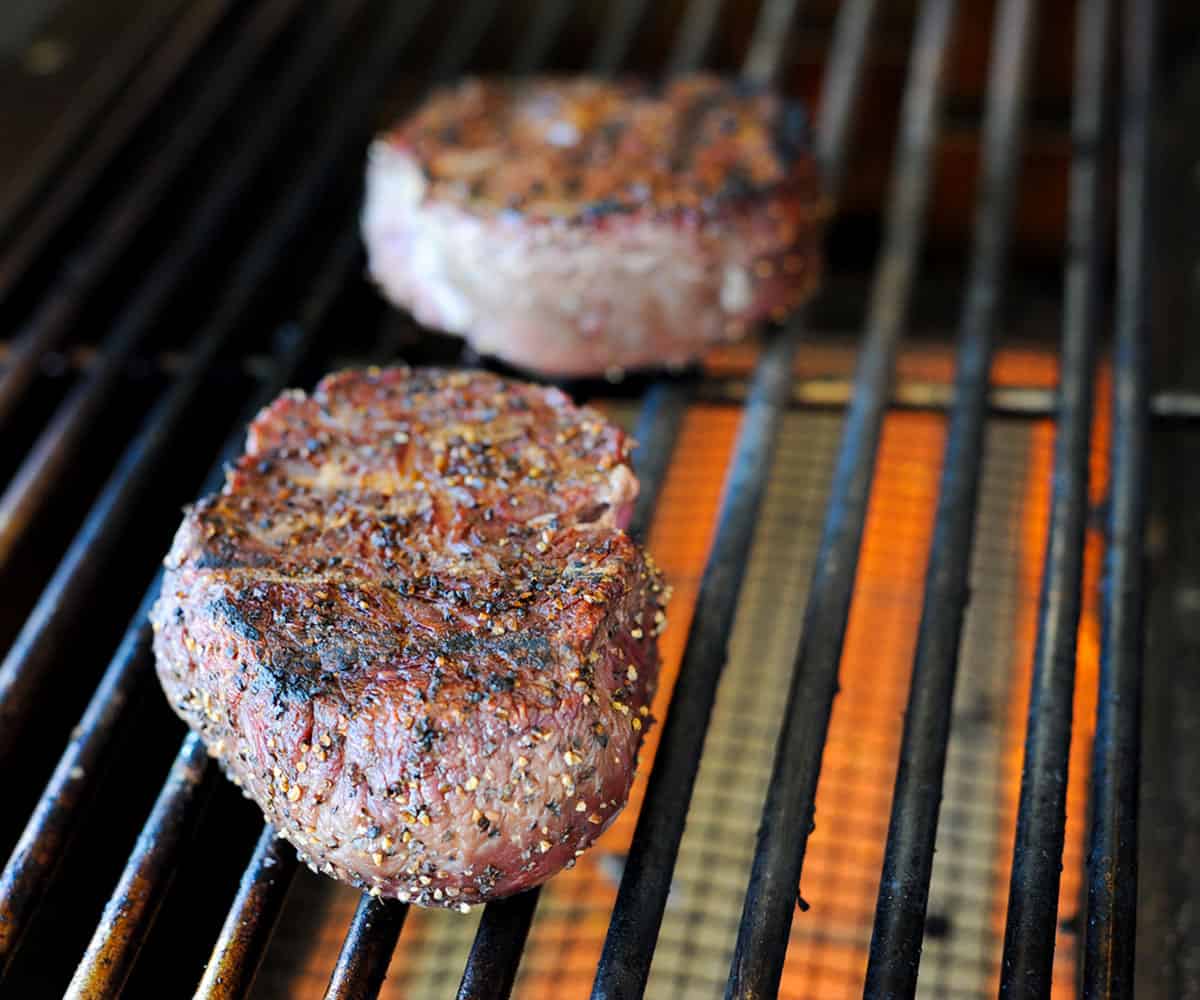
Grilling filet mignon
To grill filet mignon, you’re going to want to set your grill temperature to high, maybe medium-high heat. If you have a gas grill, simply turn on the burners. If you have a charcoal grill, I strongly recommend that you have a thermometer in the dome of your lid so that you can measure your temperature.
You’re going to be looking at about 350-400F kind of range. Pellet grill, same thing. You can set your grill to 350-400F.
Once your grill is heated, go ahead and put your steaks on the grill.
You’re going to grill them for just a few minutes per side and it’s okay to flip them occasionally, because, again, the center of the meat is semi cold and you’re going to introduce that high heat and it’s going to start to heat up and reach the center.
Then, you’re going to flip it and it’s going to do the same thing on the opposite side and start to reach the center.
But the goal is that we’ve got to get that center temperature to about 125-127F degrees. That’s usually the goal temp that I go for for medium rare.
So you’re going to flip it a few times. It might take 4 minutes per side, it might take five, 6 minutes per side.
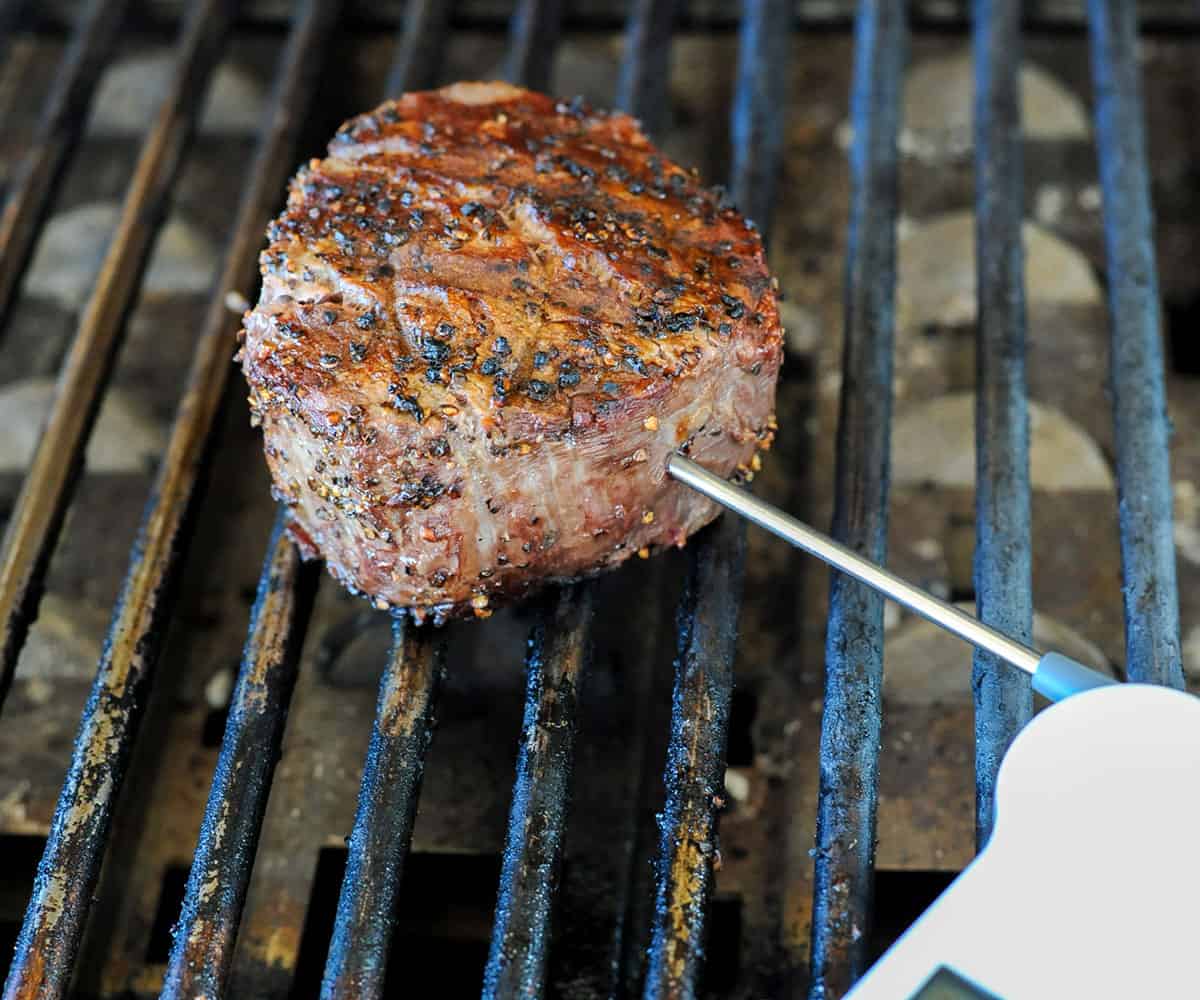
How to know when they’re done
The key is to use a meat thermometer. You’re going to stick that through the side of the steak, touching the center of the steak.
If you like your steak cooked a little bit further, go ahead and just keep cooking it. Just remember that when you remove it from the grill, there is going to be some carryover cooking.
What that means is that as the juices kind of settle and redistribute into the meat, it’s going to continue warming the inside of the meat.
Then let it rest for 5 minutes or so and then you can serve it up.
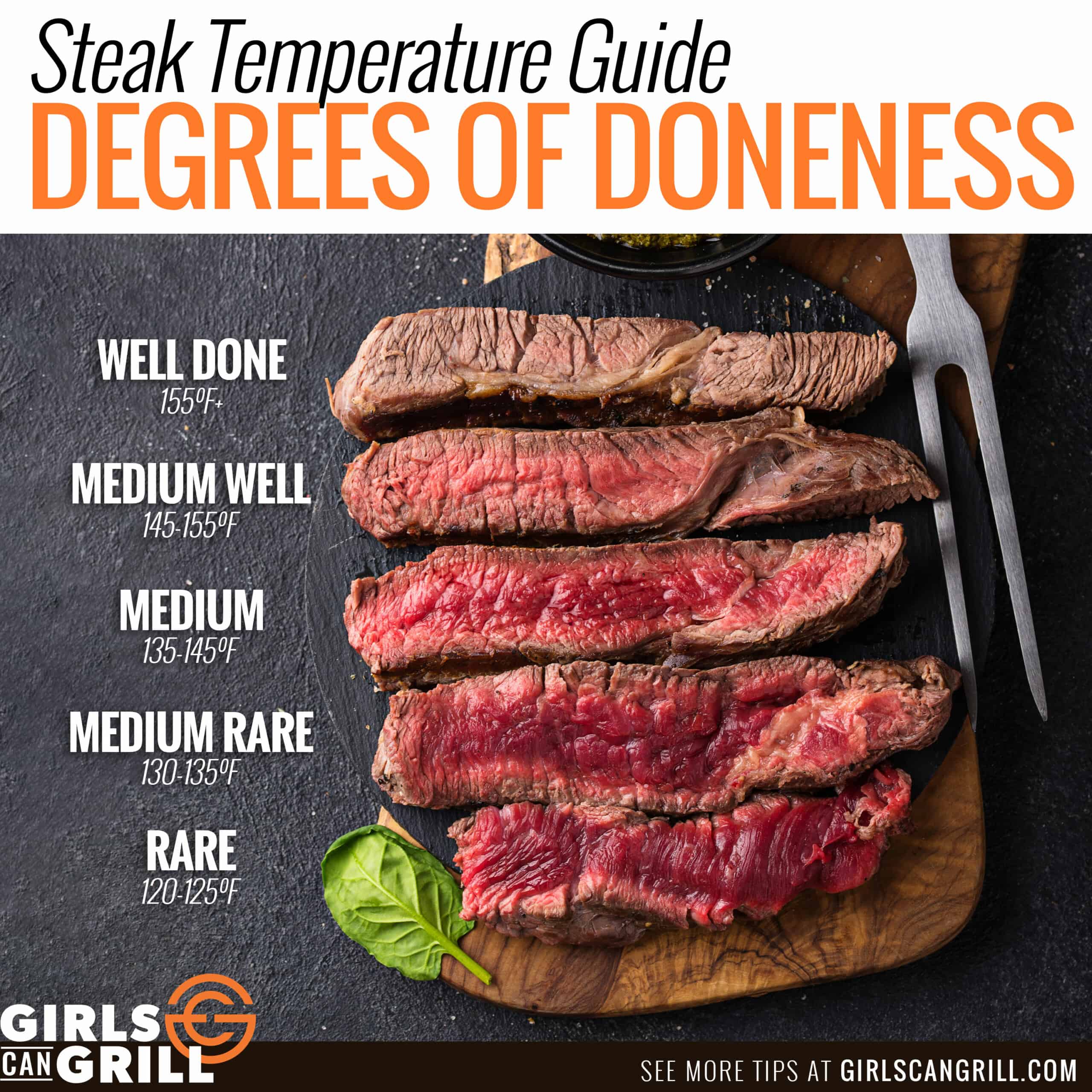
Searing filet mignon
All right, let’s move on to the searing method for filet mignon steaks. Personally, I like to use a cast iron pan.
It provides the ideal crust, and it gets to the just perfect temperature. Don’t use nonstick. It’s just not as good for steaks.
Set your cast iron pan on your burner over probably high heat. You’re going to want to get that cast iron skillet to about 500 degrees.
How to measure your skillet heat
I have an infrared gun from Thermoworks. It’s a kind that you like push a little trigger and you aim an infrared light to the skillet, to the surface of the skillet, and it’ll tell you the temperature of your pan.
The other thing I have is a Thermapen IR. One end is a Thermapen, which is a digital meat thermometer, but the other end is actually that infrared light.
So you push a button and you can shine it on your pan and it’ll tell you the temperature of your pan. It’s kind of a two in one, which I love.
So your skillet is all heated up to 500 degrees. You can add a little bit of oil at this point. I recommend using a high heat oil, which is not olive oil. You can use a canola oil, corn oil, avocado oil. Any of those will do.
You just want a little bit on the bottom. We’re not frying it. We’re just creating just a nice little shimmer so we can start to build that crust.
The key to even crust
Once the oil is heated and almost smoking. It’s time to put your filet mignon steaks right inside the pan.
Place them in the skillet, and then actually push down on them a little bit with your hand or with your tongs so that you create an even surface inside the skillet that’s going to make that crust form even more.
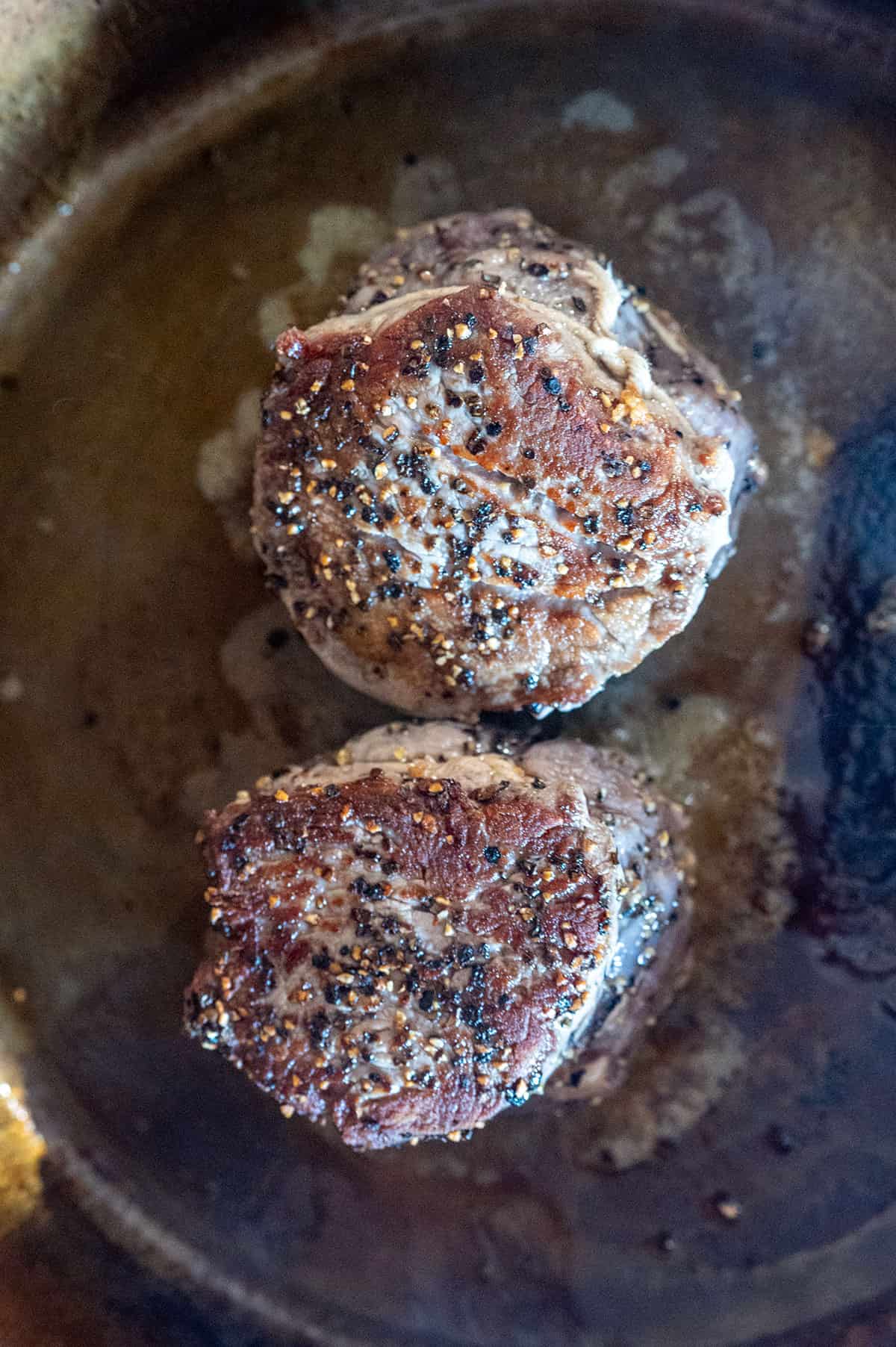
Then, just grill them for a couple of minutes, give them a flip. Do the same thing. Press down on them so they get that sear on the other side.
I usually kind of like peek at them and lift them just so I can see how the caramelization is happening, the Maillard effect, creating that browning on the steak.
Once I like it, then I go ahead and I flip it on the sides. I like to lean my steaks around the rim. So they’re leaning against the wall of the pan itself.
I move them around, flip them every now and then until they reach that 127F-degree mark. Then once they do, I remove them. Just like the grilled steaks, I let them rest.
Reverse sear filet mignon
Now let’s talk about the reverse sear steak. This is awesome because it gives you the benefits of the grill, which is that smoky charcoal wood flavor, but you get the benefits of the cast iron, which is that nice seared crust.
We’re going to set our grill or smoker to a lower temperature. It’s going to be probably about medium and you want to use an indirect heat zone.
If it’s a gas grill, you turn one burner on, but you’re going to be cooking on the side without the burner. I do recommend using wood chips in a foil pouch or smoke box so you can get that wood flavor.
If you’re cooking on a charcoal grill, push the charcoal to the side and then cook on the side where there are no coals. You can also add wood chips during this process.
If you’re cooking on a pellet grill, it’s always indirect heat, so just lower your temp to about 350F degrees and go ahead and get cooking.
The smoke stage
Place your steaks over that indirect heat and you want it to just absorb that smoke. It’s going to slowly start to come to temperature. I like to keep a temperature probe inside of my steaks to monitor them.
We’re not quite cooking them all the way to medium rare. This is just a process where we’re absorbing that smoke flavor that wood flavor and then slowly cooking them.
The sear stage
Once they reach the temperature of 110F degrees, that’s when we do the reverse sear. So the reverse here is instead of searing first, we’re doing the searing at the end.
While it’s getting close to temperature, usually when it’s about the 90F-degree mark, that’s when I heat my skillet up, just like I described earlier. Once it hits 110F degrees, I pull it off the grill and then I throw it into the skillet.
At this point, you only need to cook it for 1 to 2 minutes per side. It’s almost all the way to 127F. We’re just getting that beautiful, salty, peppery crust on it.
Once that crust is there and you hit that 127 mark, set it aside and let it rest.
Sous vide filet mignon
Now we’re going to talk about the sous vide method. Sous vide is definitely different from grilling. Sous vide is French and translates to under vacuum, which means that you put your meat inside of a vacuum bag.
You take that bag and you put it in your vacuum sealer and it sucks out the air and seals the bag. Personally, I don’t suck out all the air when I’m doing steaks because I don’t want to have the air compress and reshape my steaks too much. But I do suck out most of the air and then I give it a tight seal.
Then, you take a big pot or a bucket or some other container that has enough depth and you put water in it, enough water that you’re going to be able to add your steaks to it and they’ll be fully covered.
Then, you have a sous vide machine or some people call it a sous vide circulator or sous vide wand. You stick that inside of the pot of water.
You plug it in and you adjust the temperature. Whatever temperature you set it to, that wand is going to heat the water and it’s going to maintain that exact temperature.
So when you put your bag of steaks – or any other meat you want to sous vide – into the water, it’s basically staying at that temperature.
But it’s not boiling your steaks because, A) the temperature is not that hot and B) your steak is in that bag.
So you have all of your seasoning, your salt and pepper in the bag, but you’re not introducing all the water to your meat. So it’s not getting waterlogged like it would if you were to boil it. It’s a pretty cool method.
Best water temp for sous vide filet steaks
In order to sous vide filet mignon steaks, I like to set my circulator to a temperature of about anywhere from 115-120F degrees.
Again, we season the filets just like we did for the grill. We put them in the vacuum bag, we seal them and then you put them in the water.
I have found that the perfect time for cooking filet mignon steaks is to leave them in that vat of water for about 2 hours. If you go beyond that, your texture of your steak is going to kind of get mealy and change. And I don’t care for that.
I really like that beautiful, nice steak texture. So two-hour mark at anywhere from 115-120F is ideal.
The sear stage
After the steaks have been in the sous vide for about 1 hour and 45 minutes, that’s when I start to heat up my skillet. So just like the reverse sear method with the grill, the sous vide method involves searing after the steak is almost fully cooked.
Once we reach that two-hour mark, take your steaks out of the water, cut your bag open and take your steaks out of the bag.
Then go ahead and place them in your skillet and sear them just like you would for the reverse sear method – a couple of minutes per side until you get that beautiful crust and cook it to about an internal temp of 127F.
Reverse sous vide filet mignon
Those four methods are probably the most common ways to cook filet mignon steak, but I recently learned about another method that I don’t think has a name, but I’m calling it reverse sous vide.
So I recently competed at the Jack Daniel’s World Championship Invitational Barbecue competition, and I entered the Cook’s Choice category where you can enter anything that you can possibly think of that you want to do to represent your style of cooking.
I decided to do filet mignon and shrimp. The challenge, though, is that was on top of six other entries that I had to turn in, and I had 30-minute windows.

It was really hard for me to be able to produce this beautiful meal in that 30-minute window, so I reached out to one of my friends, Chef Harold Villarosa, who I teamed up with on BBQ Brawl on Food Network.
He filled me in on a method that he uses and that other restaurant chefs use to prepare steaks in advance so that they’re ready for service.
This is the method that I’m calling reverse sous vide. You start by seasoning your steaks liberally with that kosher salt and black pepper, and then you sear them.
Sear first
So we’re searing them first getting a nice crust on them. We’re not cooking them to temperature. We’re not trying to cook them all the way through.
All you’re looking for is that beautiful crust creation on the steaks themselves. Again, top, bottom and the sides. Just a couple of minutes per side in a really hot skillet, like a 500F-degree skillet.
Then you let them cool on the counter for 30 minutes or so. Once your steaks have cooled, you can go ahead and put them in your vacuum seal bags, suck out some of the air, seal them up.
You can either go on and cook these right away or you can store them in the refrigerator for 1 to 2 days, which is awesome.
That’s why restaurants do this. They need to do as much mise en place as possible before service.
Then sous vide
A couple of hours before dinner, get your sous vide pot all set up. Fill your pot with water, add the sous vide machine into the water, and then this time we’re going to set the temperature for 129F degrees.
That’s because we’re not searing at the end. We’ve already seared. We’re actually going to fully cook the steaks in this sous vide process. So 129F is ideal for medium rare steaks in this instance.
Get it set to 129F, then take your bag that has your steak sealed inside and place it in the water until it’s fully submerged. If you’re cooking it at 129F, I recommend cooking it for two hours.
Once the two hours are up, you can pull the bags out of the water, cut them open with some scissors, and take those steaks and place them right on the plate.
If you prefer your steaks a little bit more well-done, you can increase the temperature of your water, but decrease your time a little bit.
Finishing sauces for filet mignon
Now that you know how to cook filet mignon using five different cooking methods, let’s talk about how to finish them.
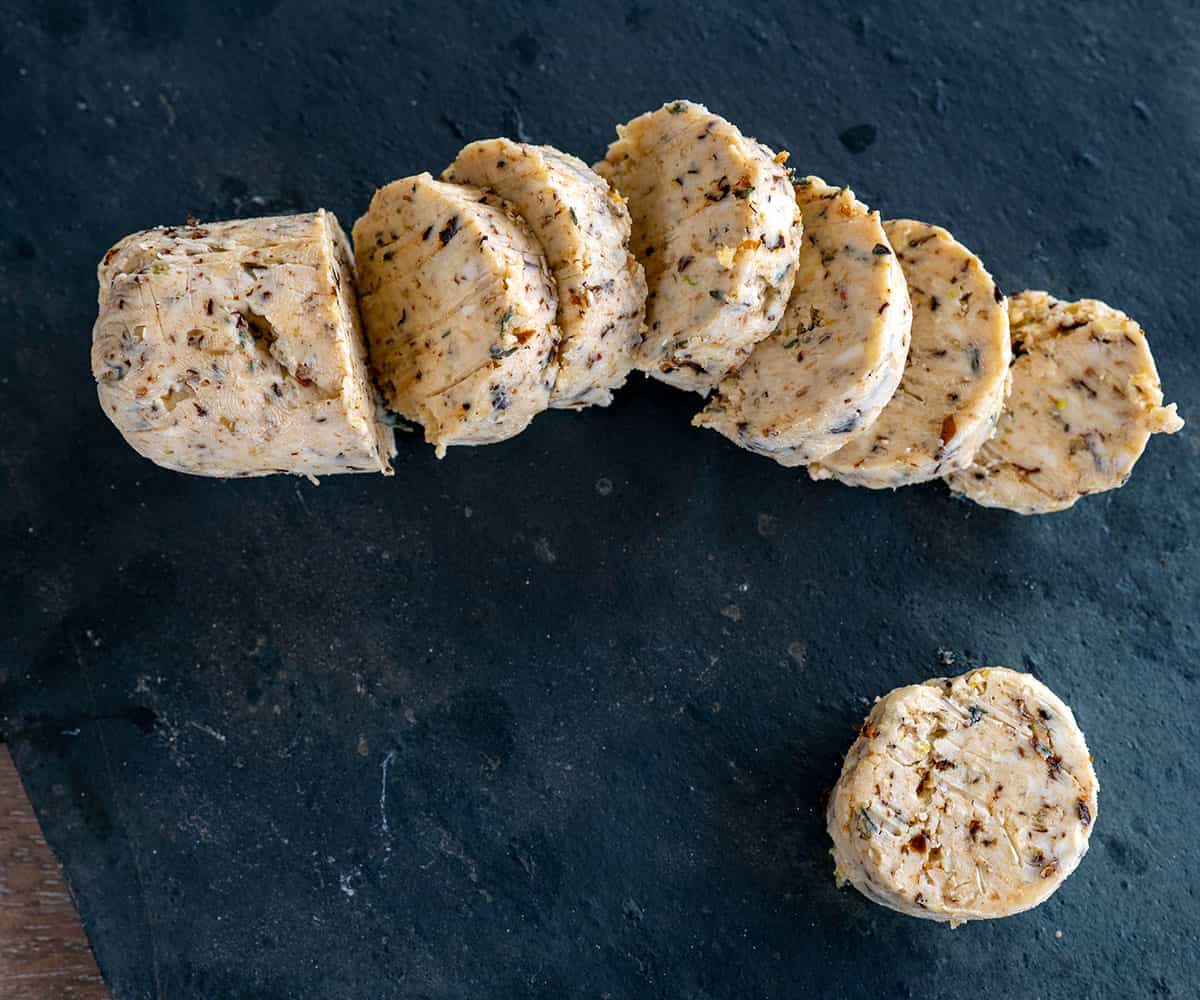
Compound butter
One of the easiest methods is making a compound butter. Just take a stick of room temperature butter, mix in some smashed up garlic cloves, some salt, maybe some pepper, fresh herbs like thyme, even a little lemon zest.
Mix that all up and then roll it in plastic wrap and stick it in the fridge. Then, when it’s time for dinner, go ahead and slice that butter into medallions and serve it on top of your steak. It’ll melt right on top of the steak and add a beautiful flavor.
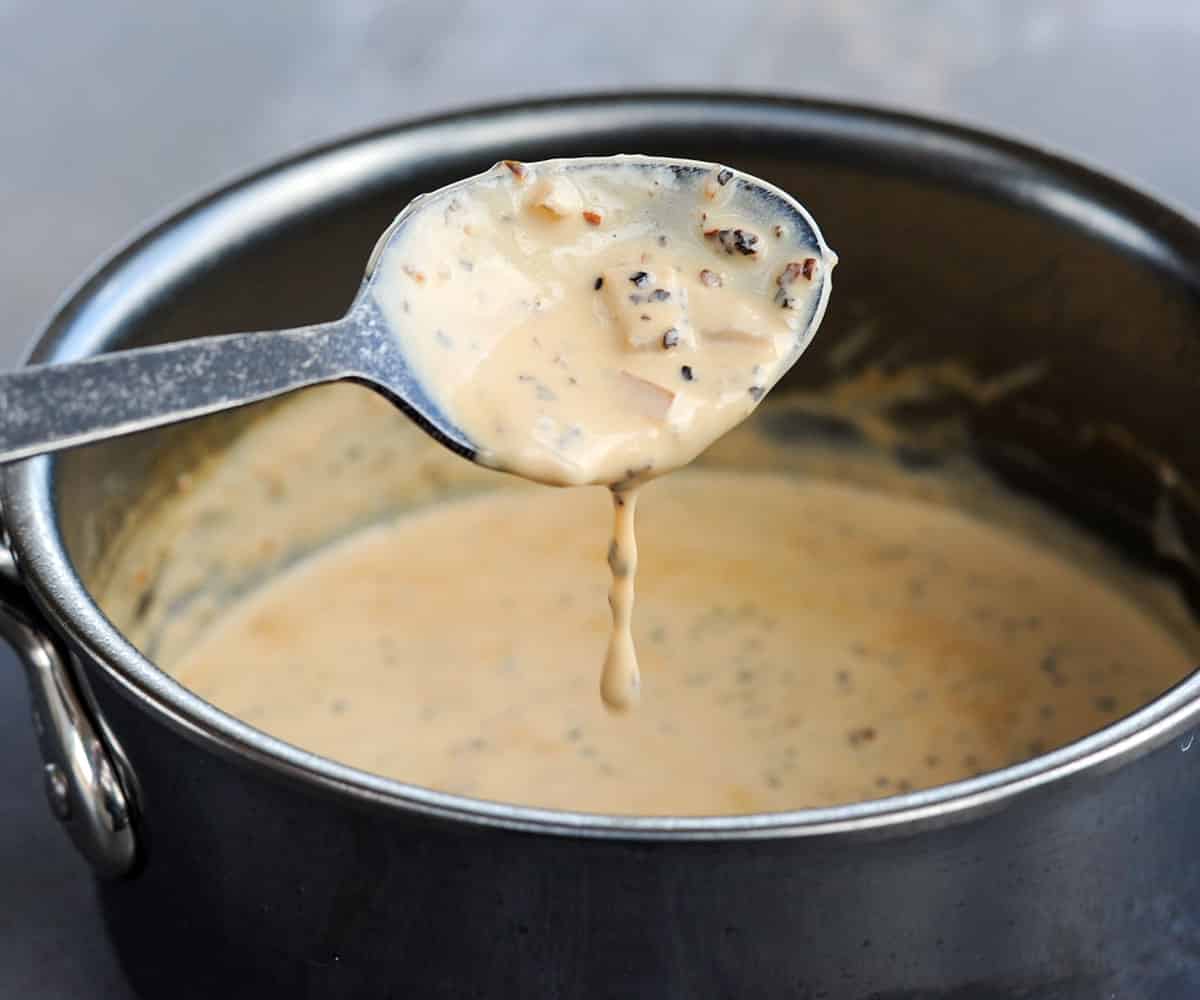
Peppercorn Sauce
My personal favorite sauce for filet mignon steaks is peppercorn sauce. And it’s really not that hard to make, especially if you sear your steaks in a pan.
In the pan, you’ll have a little bit of the drippings and the brown bits left over. That’s called fond. Add a little bit of butter to that, add some cracked black peppercorns and some shallots.
Sauté that up and then add a little bit of beef broth and some cognac for just a little kick and let that cook and boil for a few minutes. Then, pour in some cream and let that continue to cook until it thickens.
You can ladle that right over your steaks. And it is fantastic.
Since this is the Valentine’s Day episode, I can’t forget Oscar style steak. That’s when you take your grilled filet mignon steak, add a couple of pieces of grilled asparagus, top it with a big mound of crab meat and drizzle it with a hollandaise sauce.
That is a special meal that’s going to make your loved one super happy.
So try any one of these methods this Valentine’s Day and you’re going to have a happy valentine.
Tune into more of my BBQ Tips podcasts or scroll around the website for even more helpful BBQ Tips. Until next time, Happy grilling and happy Valentine’s Day.
